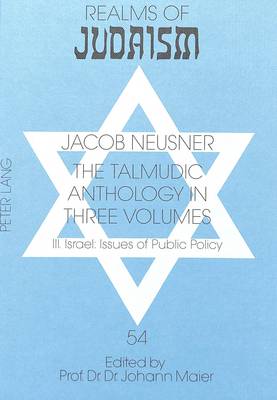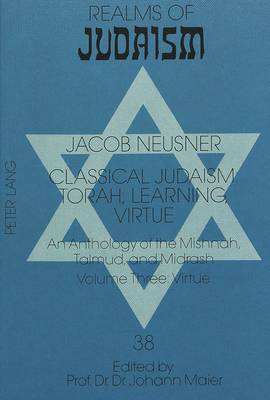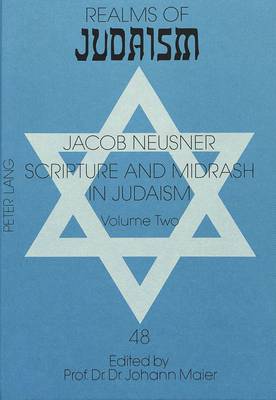Realms of Judaism S.
4 total works
v. 54
This anthology sets forth, in three volumes, a selection of Talmudic discussions of problems of enduring social importance. Utilizing the categories that uniformly serve in the description, analysis, and interpretation of a religion that sets forth a theory of the social order, in this case, a Judaism, we ask about how the Talmud of Babylonia discusses topics concerning Torah, God, and Israel. Those categories in their native and classical setting speak of o1! God's o2! revealing the Torah o3! to Israel the holy people. These categories may be represented by the secular words o1! ethos, o2! ethics, and o3! ethnos. They correspond, in a religious system, to the world view, way of life, and social entity. In each case, there is an introduction to a discussion, which specifies how the ancient sages address an issue of acute contemporary consequence. The way in which the Talmud presents its authors' ideas on issues that concern humanity in the twenty-first century is laid out in the Talmud's own language and idiom.
v. 42
Writing with Scripture, the ancient sages of Judaism made use of Scripture by making Scripture their own, and making themselves into the possession and instrument of Scripture as well, a reciprocal process in which both were changed, each transformed into the likeness and image of the other. This they did by effecting their own selections, shaping a distinctive idiom of discourse, all the while citing, responding to, reflecting upon, Scripture's own words in Scripture's own context and for Scripture's own purpose: the here and now of eternal truth. And the rabbis of the first six centuries A.D. through the compilation presented here not only wrote with Scripture, but set forth a statement that was meant to be coherent and proportioned, well-crafted and well-composed. Since the statement concerned the distinctively-theological question of God's and Israel's relationship with one another, we must classify the writing as theological and find out how, in the compilation before us, their theological structure accomplished the authorship's goals. This anthology aims at doing just that.
It presents a complete account of how the classical Midrash-text treat a theme of urgent interest to the world today: how Judaism writes with Scripture about the issues of religion that confront all the faithful.
It presents a complete account of how the classical Midrash-text treat a theme of urgent interest to the world today: how Judaism writes with Scripture about the issues of religion that confront all the faithful.
v. 38
This three-part anthology presents Classical Judaism in accord with its native categories, Torah, learning, and virtue. These correspond to the categories that a religious system will define for itself: world view, way of life, and theory of the social order that maintains the view and realizes it in its shared existence. By presenting substantial samples of the writings of that Judaism, the three volumes afford direct access to the way in which, in its own words, that Judaism makes its statement. Readers are introduced through extensive selections to the character of Judaism through the kinds of writing that serve as its medium - Midrash, Mishnah, Talmud, stories about sages. The first part of the anthology speaks of the Torah, meaning, the written Torah and how it is read in Scripture. The second addresses the Mishnah, that is, the first document of the oral Torah, and further introduces the Talmuds and explains how these are to be read. Both of these volumes begin with essays on hermeneutics. The third volume sets forth the way in which the sage is represented as a medium through which the Torah of Sinai is set forth.
v. 48
The rabbis of late antiquity produced a score of exegesis of the Hebrew Scriptures of Ancient Israel (the Old Testament), in which they took various approaches to the study and interpretation of what they called the written Torah. These exegesis, called collectively Midrash form an important part of the oral Torah, that is, the tradition of Sinai formulated and transmitted for memorization and ultimately written down by the ancient sages in the first six centuries A.D. These three volumes present large selections of the Midrash-documents of ancient Judaism, in the translation of Jacob Neusner, who has now translated into English nearly all of the Rabbinic literature of late antiquity. The selections are organized by type, so that readers see the various ways in which, in form and in intellectual program, the documents of Midrash-compilation were formulated and set forth. In this way, the vast body of biblical exegesis put forth by Judaism in its formative age is made available to the contemporary reader.



